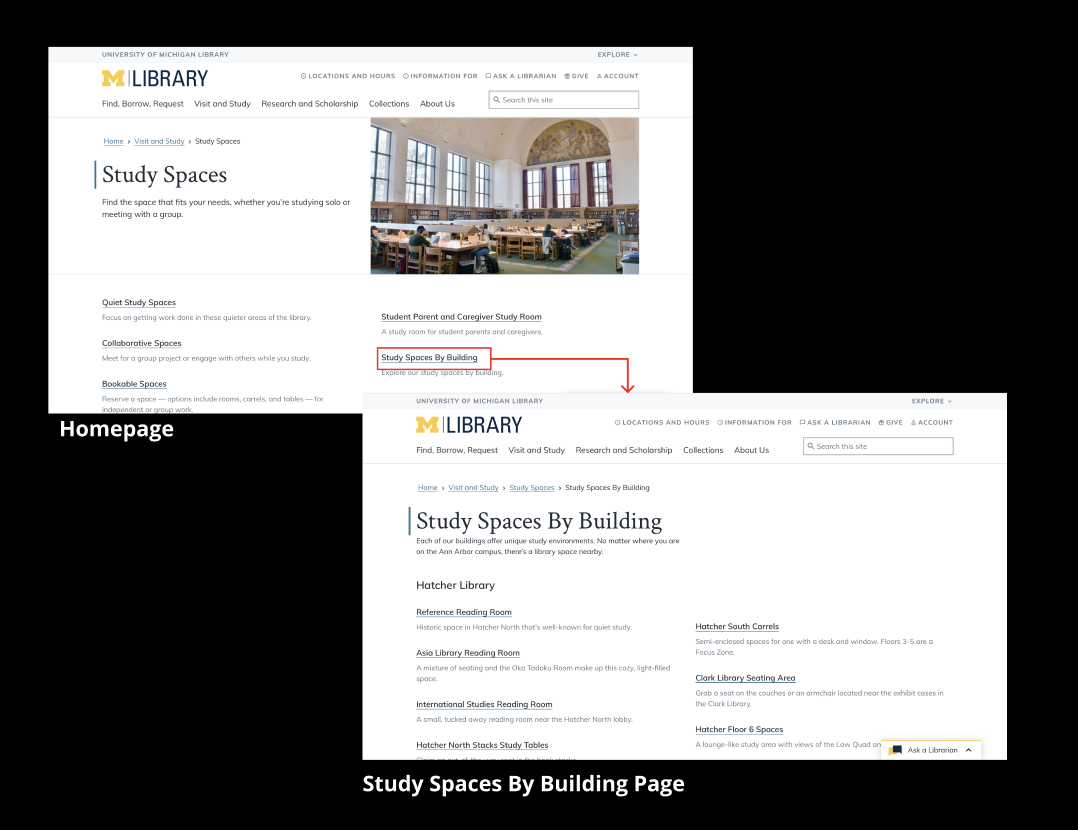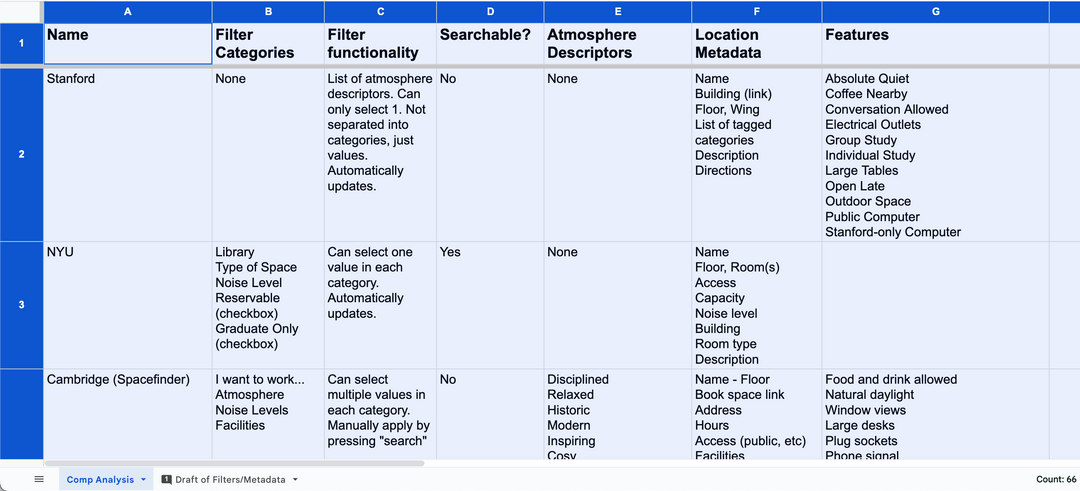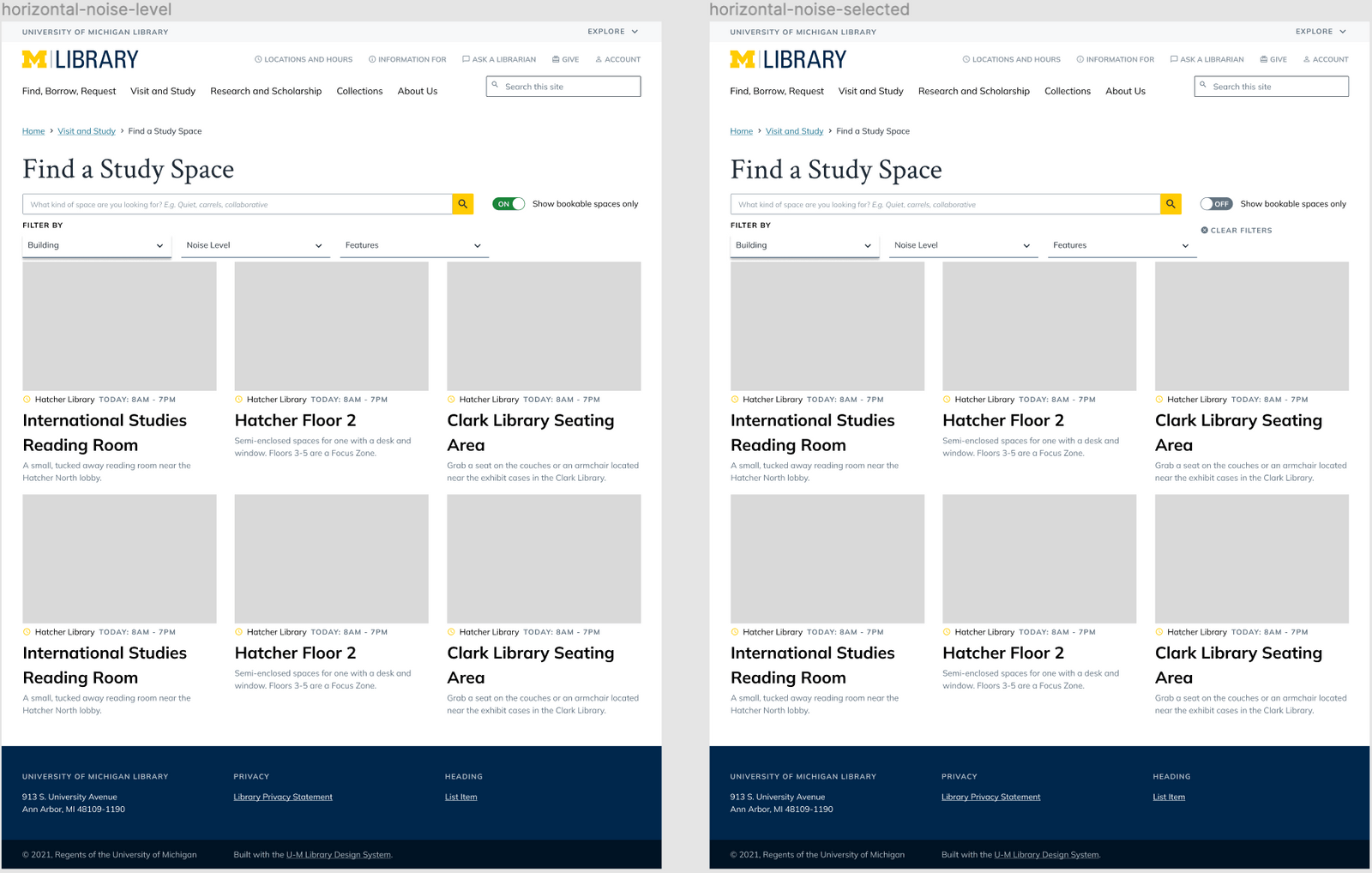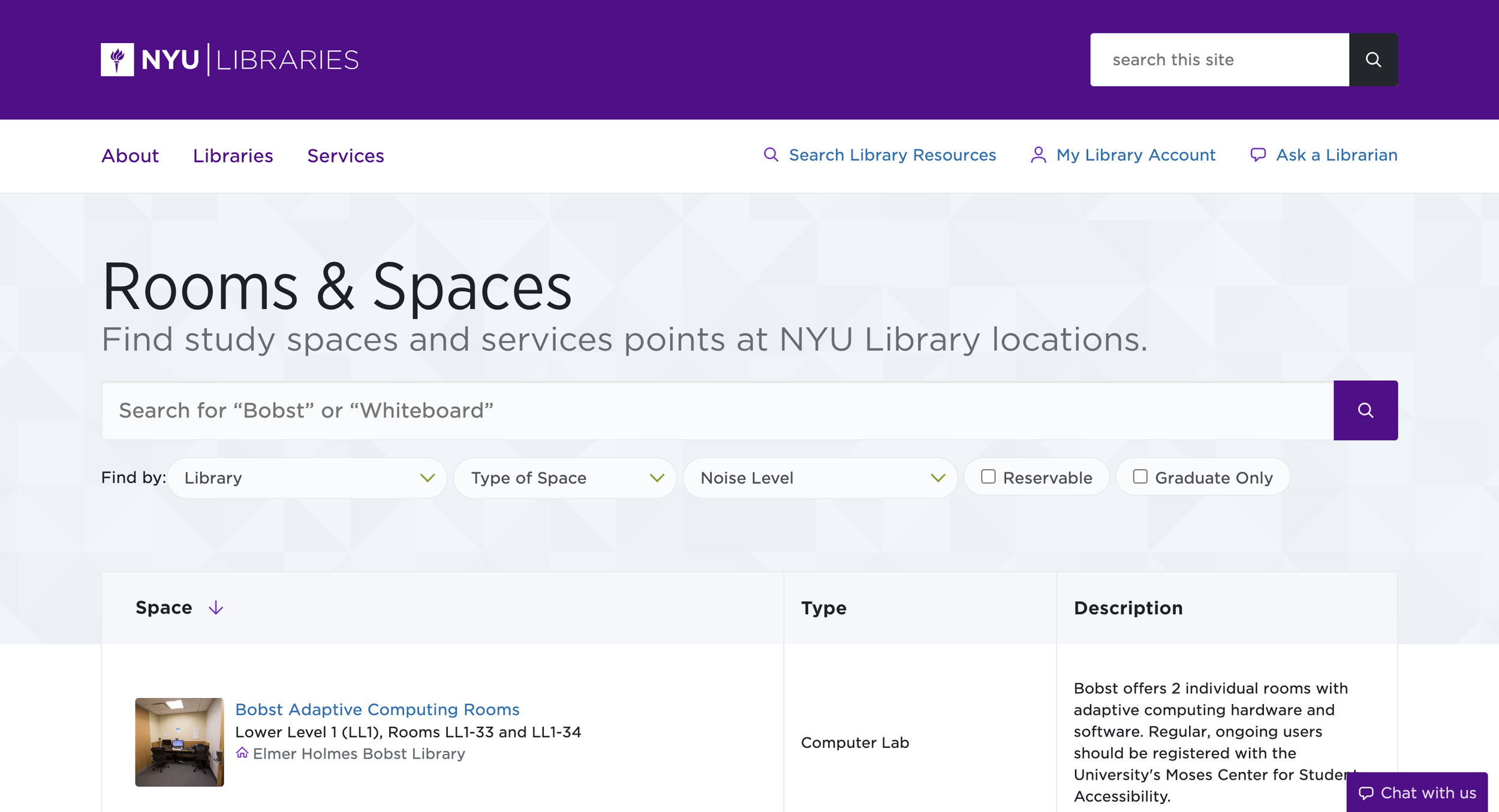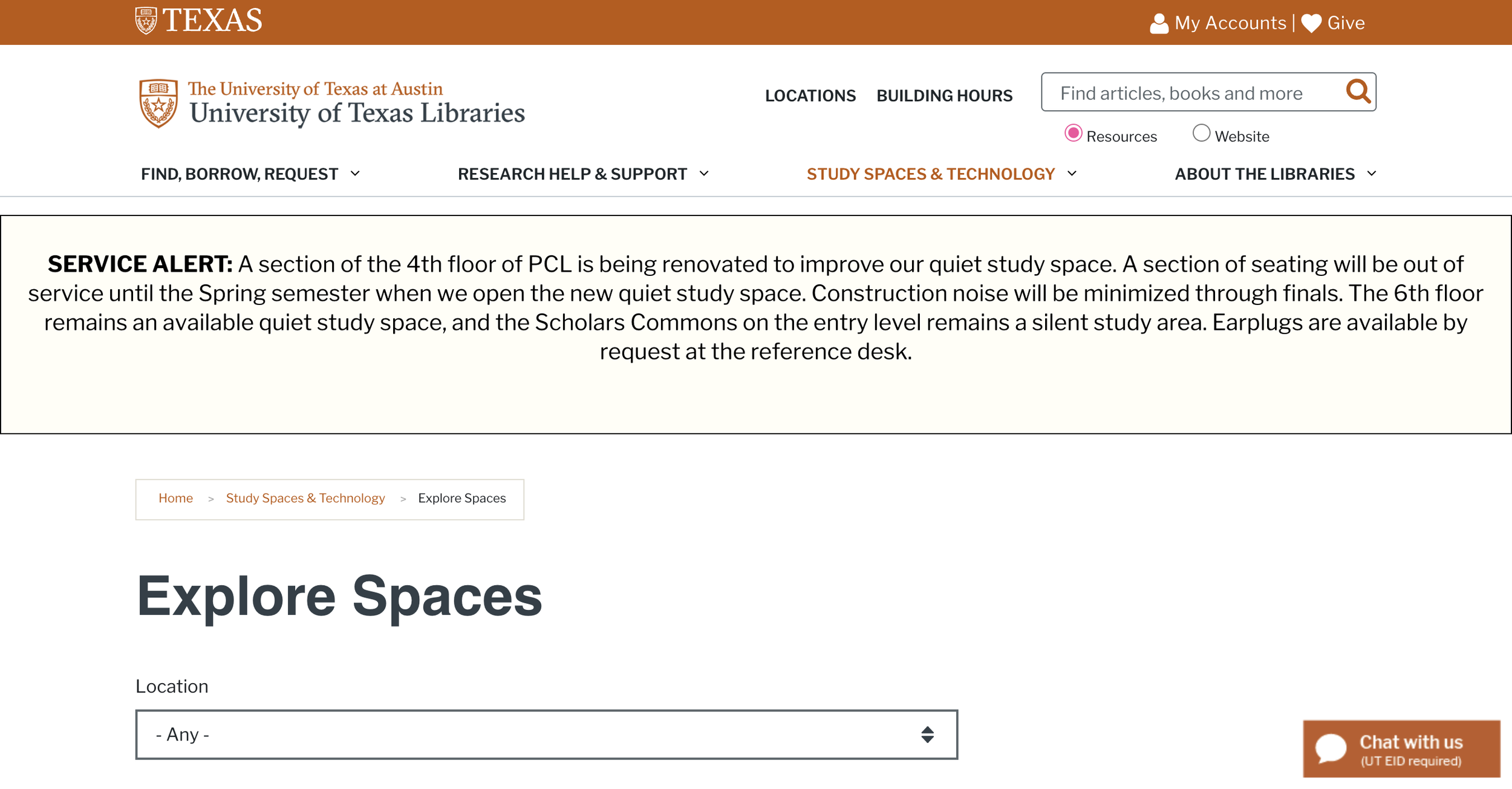University of Michigan Searchable/filterable Study Spaces
UX Research
MY ROLE
UX Research
RESPONSIBILITIES
UX research, User interviews, Usability testing, and Data analysis
TEAM MEMBERS
UX Researcher
STAKEHOLDERS
Library Information Technology Design and Discovery Team
CLIENT
University of Michigan Library
PROJECT TIMELINE
Oct - April 2023
OVERVIEW
PROBLEM
PROCESS
RESEARCH & DESIGN
FINDINGS
TAKEAWAYS
The Library Environments UX Research Team and the Library Information Technology Design and Discovery Team collaborated to improve the user experience of the Library’s study spaces booking website.
Challenge
How can we improve our study space reservation system with searchable/filterable features to make our spaces findable?
Students experienced issues searching and booking studying spaces on the
library's booking site.
Methods
Competitive analysis
Design mock-ups
Usability tests
Data analysis
Competitive Analysis
With the competitive analysis, we were able to analyze various universities and compare filter categories, filter functionality, level search-ability, atmosphere descriptions, location metadata, and features.
Mock-ups
The UX designer designed two mock ups of study space booking website with filter values for "Noise level" and "Atmosphere" as well as views of filter components in use.
Vertical version
Horizontal version
We selected University of Cambridge, NYU, UT Austin, and Duke as our databases for usability testing, as they closely matched our mockups.
I conducted 15 usability tests, optimizing task order and combinations to prevent bias and data manipulation.
Usability Testing
Recommendations
We identified key themes and highlighted outliers. This supported our design decisions for the future reservation booking system.
Here's what some students were saying:
Data analysis
We learned that students want a website that is easy to navigate, yet provides the necessary information to book a suitable study space.
Here are the key recommendations:
Students emphasized the importance of images and descriptions.
Students needed directions and guided instructions.
Students were eager for a feature that would allow them to filter out non-reservable spaces.
Indicators for noise levels were highly requested.
This research process taught me how to apply service design principles to my research strategy. Throughout the process, I learned that centering our users throughout the process aligned the most with our goals.
Usability testing provided significant insight on where users experienced challenges which resulted in me developing more empathy for our users. I also learned to adopt flexibility during usability testing. Sometimes you'll encounter users who are short with responses, so you have to adapt and ask questions in different ways to better assist the user.

